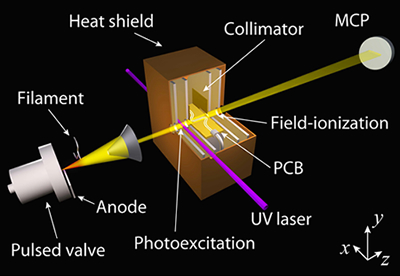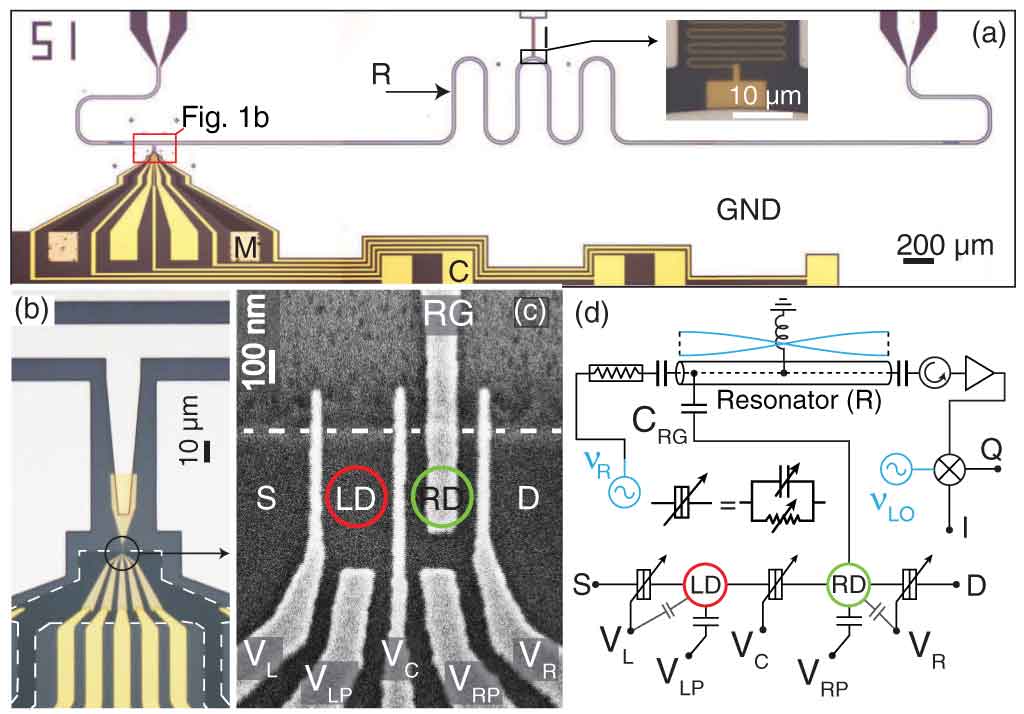Combining the long coherence times available in microscopic quantum systems with the strong interactions and integration available in solid state systems is a major goal in quantum information science. Atoms and ions for example can be effectively isolated from their environment allowing for coherence times of up to minutes. On the other hand, the interactions of these systems with control fields are usually weak, limiting the effective time scales over which the quantum systems can be manipulated. In a solid state environment the situation is the opposite. There the interaction of the quantum system with its environment is strong. This allows for strong interactions with control fields and thus fast manipulation of the quantum state of a system. However, these systems simultaneously have much shorter coherence times.
 |
|
Figure 1: Schematic diagram of the experimental apparatus (not to scale). (Image: S. D. Hogan et al., Physical Review Letters 108, 063004 (2012)) |
In a key project, we explore large dipole moment superconducting artificial atoms and natural Rydberg atoms interacting with radiation fields contained in on-chip microwave resonators. In these resonators individual photons generate field strengths which exceed those in conventional mirror-based resonators by orders of magnitude. We explore possibilities to develop an interface between circuit and atom-based realizations of cavity QED. In a joint effort with Frederic Merkt (D-CHAB, Physical Chemistry) we study the coupling of Rydberg atoms to on-chip resonators. We have investigated the interaction of ensembles of atoms in a beam with the coherent fields in a continuous transmission line. We have performed spectroscopic measurements of Rydberg atoms using field ionization detection in a cryogenic setup and have detected coherent Rabi oscillations of the ensemble [1]. At the same time, we are making progress to investigate atom detection schemes based on the dispersive interaction with a microwave field stored in 2- or 3-dimensional microwave resonators.
In a different promising hybrid approach we have combined semiconductor quantum dots with superconducting microwave cavities to observe the dipole coupling of a double quantum dot to a microwave field [2]. This approach is expected to open new possibilities to explore the physics of semiconductor quantum dots using sensitive and large bandwidth measurement schemes originally developed in the context of superconducting circuits.
 |
|
Figure 2: (a) Optical micrograph of the microwave resonator (R), with integrated double quantum dot, Ohmic contacts (M), top gates (C), ground plane (GND), and on-chip inductor (I). Inset: Magnified view of inductor (I). (b) Enlarged view of the device near the double quantum dot. The mesa edge is highlighted with a dashed line. (c) Scanning electron micrograph of the gate structure defining the double quantum dot (LD, RD). (d) Electric circuit representation of the double quantum dot coupled to the resonator. (Image: T. Frey et al.,Phys. Rev. Lett.108, 046807 (2012)) |
References
[1] Driving Rydberg-Rydberg Transitions from a Coplanar Microwave Waveguide, Physical Review Letters 108, 063004 (2012), also in arXiv:1110.1256
[2] Dipole coupling of a double quantum dot to a microwave resonator, Phys. Rev. Lett. 108, 046807 (2012), also in arXiv:1108.5378


